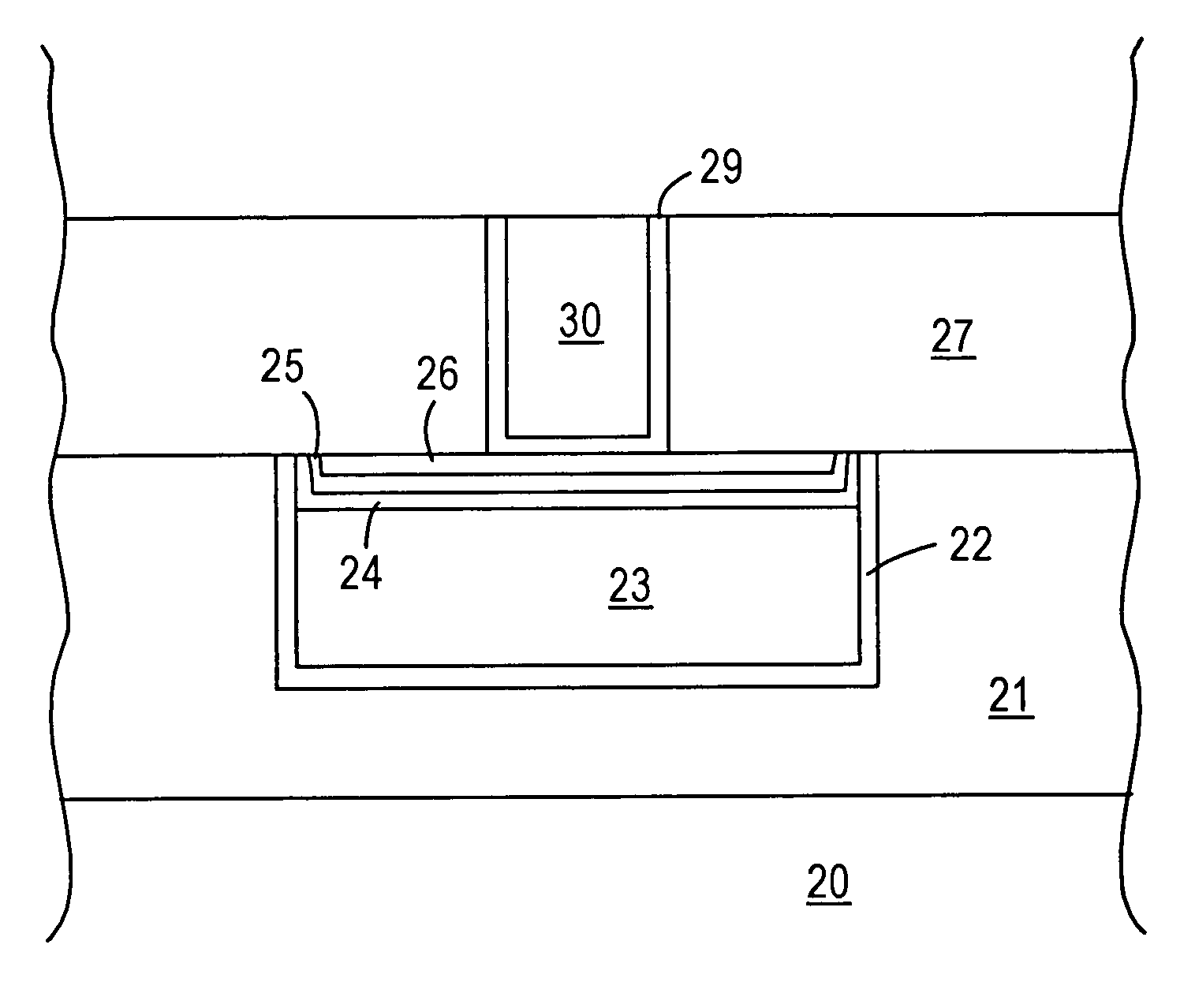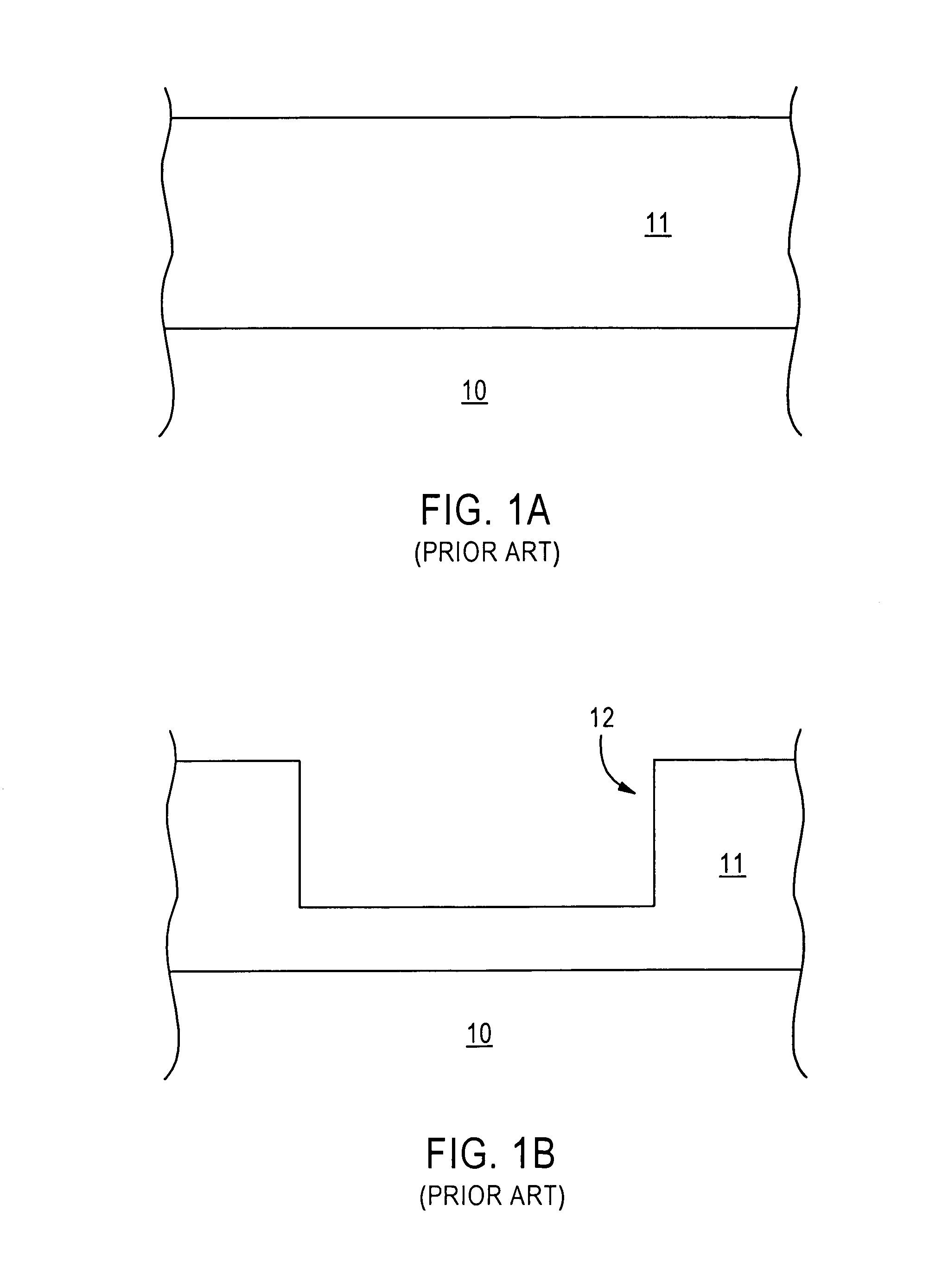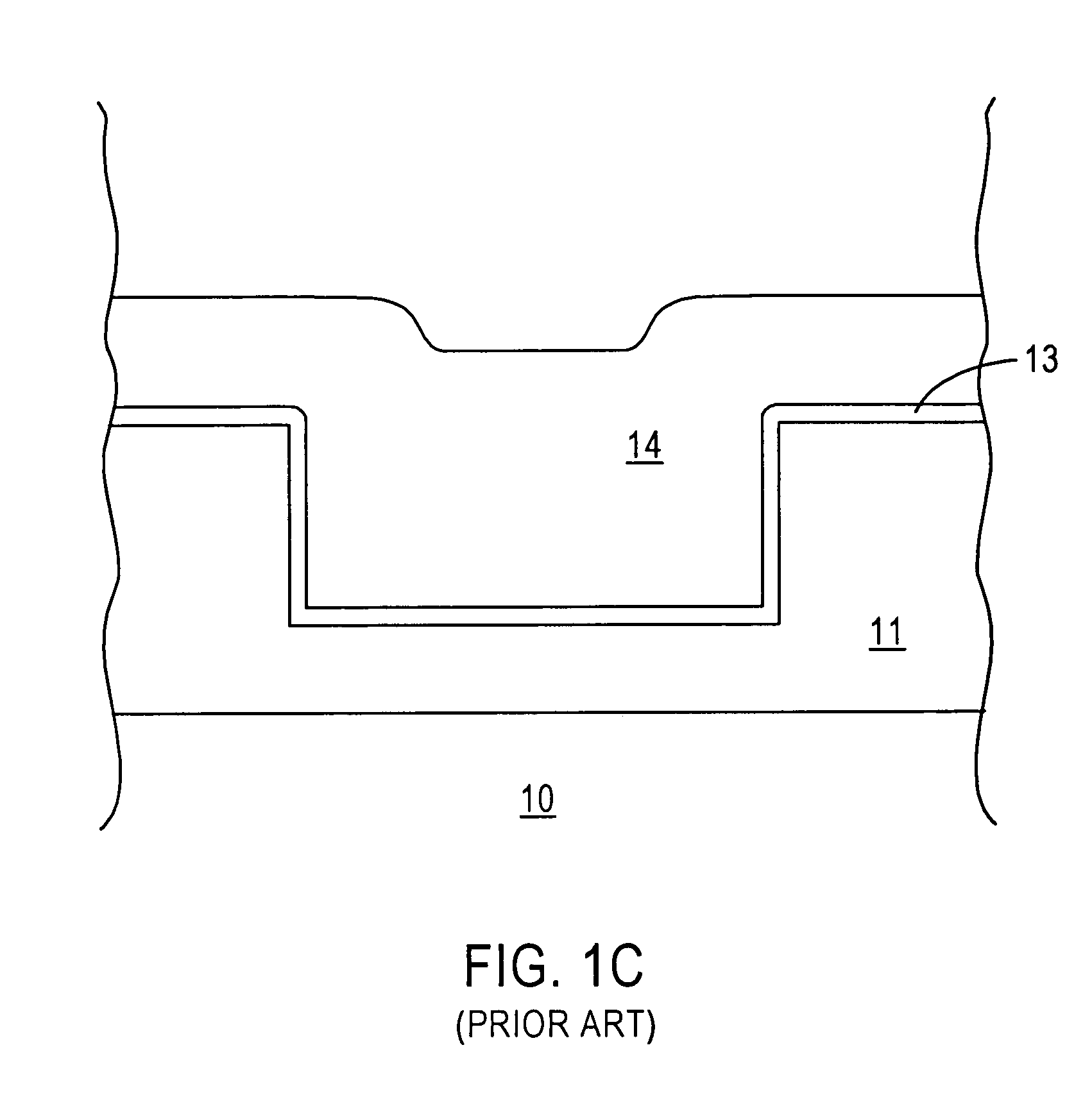Composite tantalum capped inlaid copper with reduced electromigration and reduced stress migration
a technology of inlaid copper and composite tantalum, which is applied in the direction of semiconductor devices, semiconductor/solid-state device details, electrical apparatus, etc., can solve the problems of increasing rc delay caused by interconnect wiring, engendering various reliability issues, and severe requirements for semiconductor fabrication technology, etc., to improve the resistance of the interconnection, reduce the via resistance, and improve the effect of stress migration resistan
- Summary
- Abstract
- Description
- Claims
- Application Information
AI Technical Summary
Benefits of technology
Problems solved by technology
Method used
Image
Examples
Embodiment Construction
[0019]The present invention addresses and solves various problems attendant upon forming metallized interconnects, such as Cu or Cu alloy interconnects, including damascene structures in dielectric layer(s) having a dielectric constant less than about 3.9. As employed throughout this application, the symbol Cu is intended to encompass high purity elemental copper as well as Cu-based alloys, such as Cu alloys containing minor amounts of tantalum, indium, tin, zinc, manganese, titanium, magnesium, chromium, titanium, germanium, strontium, platinum, magnesium, aluminum or zirconium.
[0020]As design rules are scaled down into the deep submicron range, such as about 0.12 micron and under, electromigration, stress migration, contact resistance and voiding issues associated with interconnects, particularly Cu interconnects, become increasingly significant. The present invention addresses and solves such problems by providing a composite capping layer for inlaid Cu, the composite capping lay...
PUM
| Property | Measurement | Unit |
|---|---|---|
| dielectric constant | aaaaa | aaaaa |
| pressure | aaaaa | aaaaa |
| diameter | aaaaa | aaaaa |
Abstract
Description
Claims
Application Information
 Login to View More
Login to View More - R&D
- Intellectual Property
- Life Sciences
- Materials
- Tech Scout
- Unparalleled Data Quality
- Higher Quality Content
- 60% Fewer Hallucinations
Browse by: Latest US Patents, China's latest patents, Technical Efficacy Thesaurus, Application Domain, Technology Topic, Popular Technical Reports.
© 2025 PatSnap. All rights reserved.Legal|Privacy policy|Modern Slavery Act Transparency Statement|Sitemap|About US| Contact US: help@patsnap.com



